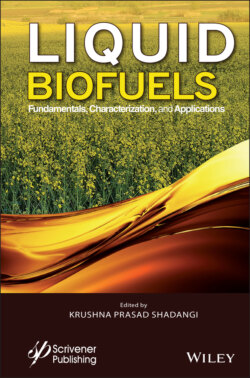Читать книгу Liquid Biofuels - Группа авторов - Страница 14
1.2 Lignocellulosic Biomass and Its Composition
ОглавлениеVarious agricultural by-products and vegetal wastes that are released to the environment as solid wastes can be considered as biomass sources. Such substances show similarities with wood in terms of their general properties and chemical structures and are called lignocellulosic biomass. Lignocellulosic biomass has a rather complex polymeric structure. The plant cell (from outside to inside) consists of pectin, cellulose, ligninhemicellulose, and soluble stoplasmic compounds. Intracellular components are mainly sugars, starch, proteins, pectin and lipids. Lignocellulosic materials are an important source of raw materials because these components can be separated by hydrolysis and extraction [4, 5].
The lignocellulosic materials that make up 50% of the total biomass in the world are not suitable for consumption as direct food and are made up of plant sources. Basically, there are three basic polymers: hemicellulose (C5H8O4)n, cellulose (C6H10O5)n and lignin [C9H10O3) (OCH3)0.9-1.7]n [4]. Typically, biomass contains 40-60% cellulose, 20-40% hemicellulose and 10–25% lignin. Extracts and minerals in lignocellulose are up to 10% of the weight of dry biomass. Other substances in the lignocellulose (extractives) are organic solutions or water-soluble substances, which make up a very small part (1-5%) of the lignocellulosic substance [6].
The cell walls of plants contain lignocellulose. If the lignin is removed, the polysaccharide derivative remains. Polysaccharides in the plant cell are also called halocellulose. Halocelluloses consist of celluloses and hemicelluloses. If halocellulose is hydrolyzed, C6 and C5 sugars, uronic acids and acetyl groups are obtained. C6 sugars are glucose, mannose and galactose. C5 sugars are mainly xylose and arabinose. The ratio of each compound varies depending on the plant source [7].
The main components of lignocellulosic natural sources are cellulose, hemicelluloses, lignin, extractives and inorganics [8]. Cellulose in nature is polysaccharides such as various starch, pectin, and hemicellulose. Hemicelluloses are galactose, mannose, xylose, arabinose and other sugars; they contain polymers and heteropolymers of uronic acids. In addition cellulose in nature exists as a mixture of cellulose-lignin [9, 10].
